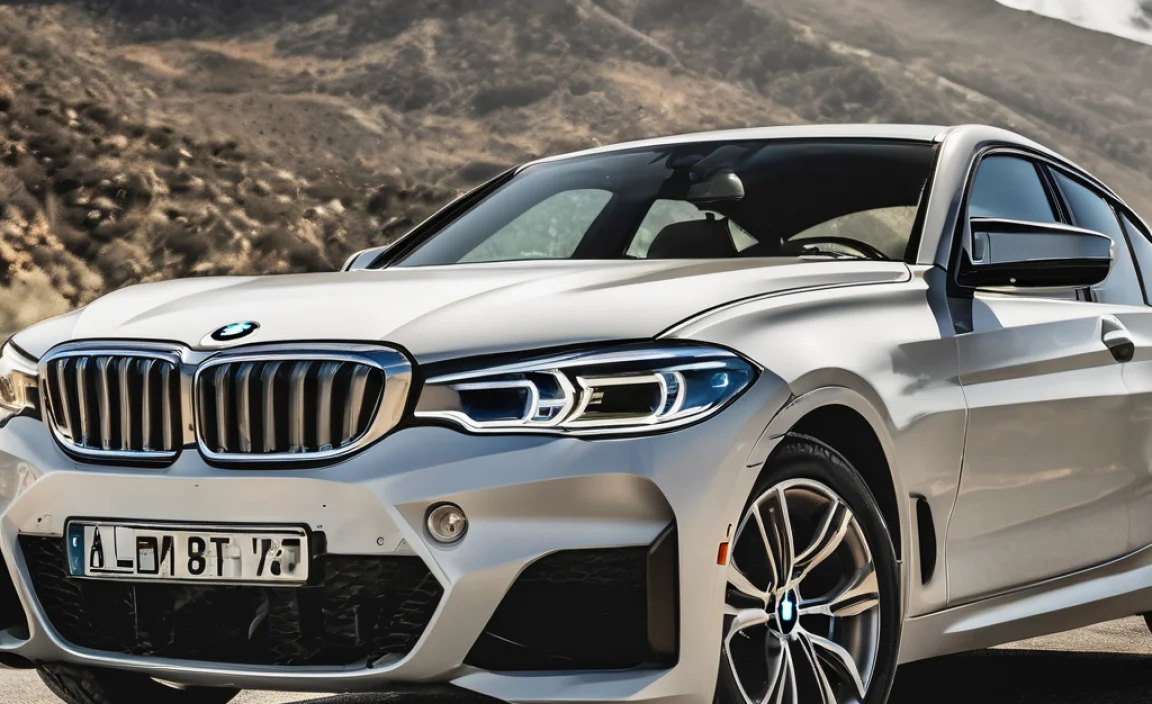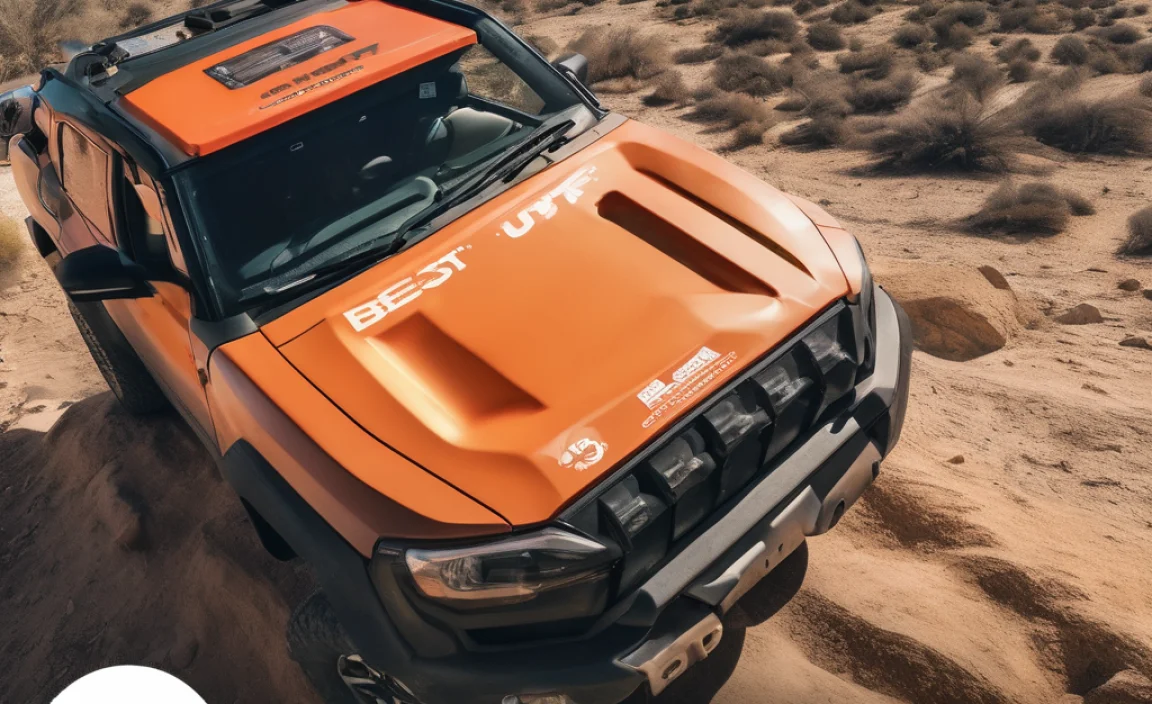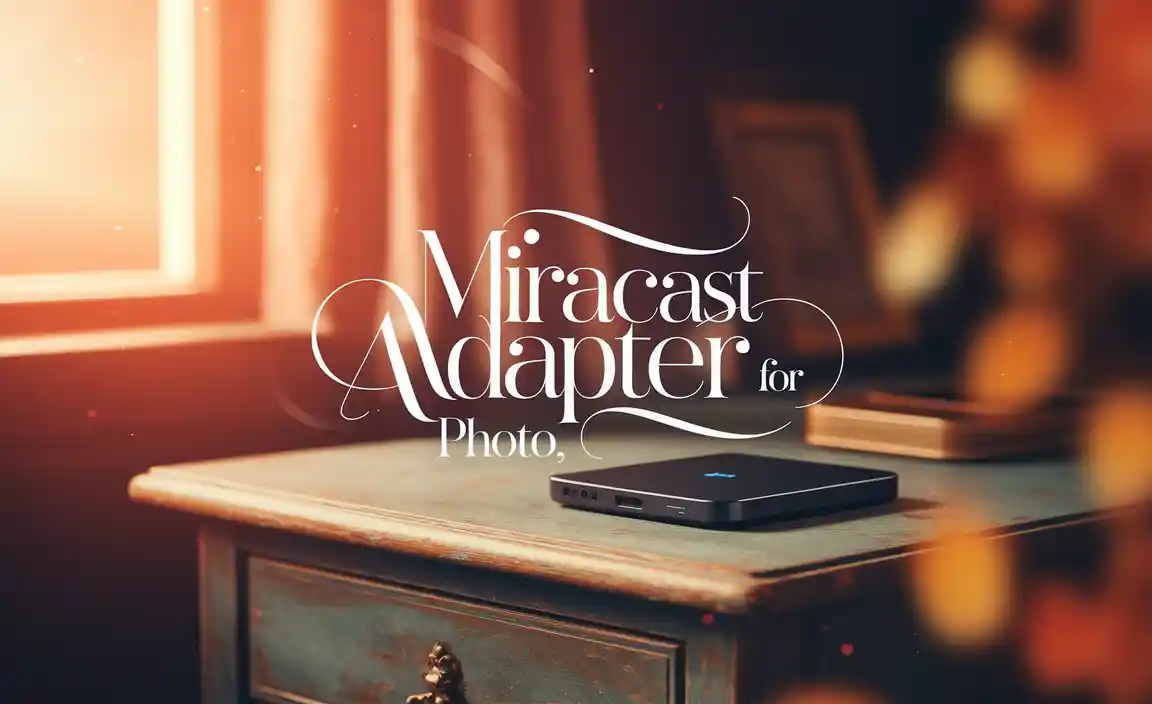Quick Summary
Yes, you can use a J1772 adapter for Tesla Superchargers. This guide explains how this adapter lets non-Tesla EVs charge at Superchargers, what you need to know for safe, effective use, and how it opens up more charging options for everyone.
Driving an electric vehicle (EV) is exciting, offering a cleaner way to get around. But sometimes, you might see a Tesla Supercharger and wonder if your car can use it. If you drive a non-Tesla EV, you’ve likely encountered the J1772 connector, which is standard for many other electric cars. The good news is that with a specific adapter, you can indeed tap into the Supercharger network. It’s all about the right connector and a little bit of know-how. We’ll walk you through everything you need to know, making it simple and stress-free.
This guide will help you understand the J1772 adapter for Tesla Superchargers. We’ll cover what it is, how it works, and importantly, how to use it safely and effectively. By the end, you’ll feel confident about expanding your charging options and making your EV journeys smoother.
Understanding the J1772 Adapter for Tesla Superchargers
As EV technology grows, so do the ways we can charge our cars. You might be familiar with your car’s charging port and the cables you use at home or at public stations. One common connector for many EVs is the J1772, also known as the Type 1 connector. This is the standard for most North American EVs that aren’t Teslas. On the other hand, Tesla vehicles use their own proprietary connector for their Supercharger network. For a long time, this meant Tesla drivers had access to a vast and reliable network, while other EV drivers had to rely on different charging infrastructure.
However, the landscape is changing. Tesla has begun opening its Supercharger stations to other EV brands, and this is where the magic of an adapter comes in. A J1772 to Tesla adapter acts as a bridge, allowing your J1772-equipped EV to connect to a Tesla Supercharger. This significantly expands the available charging locations, especially on longer trips, reducing “range anxiety” and making EV ownership more practical for everyone.
What is a J1772 Connector?
The J1772 connector is the standard for Level 1 and Level 2 AC charging in North America. Think of it as the common plug you see on many electric cars like the Ford Mustang Mach-E, Chevrolet Bolt EV, Nissan Leaf, Hyundai Ioniq 5, and many others. It’s designed to plug into charging stations that provide either slow (Level 1, using a standard wall outlet) or faster (Level 2, using a 240-volt connection) AC charging.
The connector itself has a unique shape with seven pins. These pins handle power delivery, communication between the car and the charger, and safety features. It’s a robust and widely adopted standard, ensuring broad compatibility across different EV manufacturers.
What is the Tesla Supercharger Connector?
Tesla vehicles have historically used their own unique charging port and connector, designed to integrate seamlessly with their global Supercharger network. This connector is capable of handling both AC charging and DC fast charging. For DC fast charging, which is what Superchargers provide, the Tesla connector is rated for very high power levels, allowing for rapid battery replenishment on longer journeys.
When Tesla began opening its Supercharger network to non-Tesla EVs, they introduced the “Tesla to J1772” adapter for their vehicles, allowing Teslas to use J1772 chargers. The adapter we’re discussing is the inverse: a “J1772 to Tesla Supercharger adapter,” designed for non-Tesla EVs to use Tesla Superchargers.
How Does a J1772 Adapter for Superchargers Work?
The J1772 to Tesla Supercharger adapter is a clever piece of technology. It essentially translates the signals and physical connections between the two different connector types. When you plug the adapter into a Tesla Supercharger cable (which has a Tesla connector), and then plug your car’s J1772 port into the adapter, it facilitates a safe and effective charging session.
Here’s a simplified breakdown of the process:
- Physical Connection: The adapter has a Tesla charging connector on one end and a J1772 receptacle on the other. You plug the Supercharger cable into the adapter’s Tesla end. Then, you plug your car’s J1772 cable (or the J1772 end of your car’s integrated cable) into the adapter’s receptacle.
- Communication: The adapter plays a crucial role in communication. The Supercharger needs to know that it’s communicating with a compatible vehicle. The adapter relays the necessary signals back to the Supercharger, indicating that the car is ready to charge and specifying its charging needs.
- Power Transfer: Once communication is established and authentication (if required by the charging network) is complete, the adapter allows DC fast charging power from the Supercharger to flow to your J1772-equipped EV.
It’s important to note that not all J1772 adapters are designed for Supercharging. Some are only for AC charging. You need an adapter specifically rated for DC fast charging from Tesla Superchargers.
Choosing the Right J1772 to Tesla Supercharger Adapter
Not all adapters are created equal, and when it comes to charging your EV, especially at high-power DC fast chargers like Tesla Superchargers, safety and compatibility are paramount. Choosing the correct adapter ensures a smooth charging experience and protects your vehicle’s battery and charging system.
Key Features to Look For:
- DC Fast Charging Capability: This is the MOST important feature. Many adapters found online are only for AC charging (Level 1 or Level 2). You need an adapter specifically designed and rated for DC fast charging at Tesla Superchargers. These adapters are built with robust components to handle the high voltages and currents involved.
- Compatibility with Tesla Network: Ensure the adapter is stated to work with Tesla’s Supercharger network (and potentially Destination Chargers, though Superchargers are the primary focus for fast charging).
- EV Model Compatibility: While most J1772 adapters are universal for non-Tesla EVs, it’s always wise to check if the adapter manufacturer lists specific compatibility guarantees for your EV model.
- Build Quality and Durability: Look for adapters made from high-quality materials, with strong housing and secure connections. This is especially important for something you’ll be plugging into high-power charging equipment.
- Safety Certifications: Reputable adapters often carry safety certifications like UL, CE, or ETL. These indicate that the product has been tested and meets safety standards.
- Current Rating: Superchargers can deliver over 150kW of power. Your adapter needs to be able to handle this. The adapter should clearly state its maximum current and voltage ratings.
Leading Adapter Brands and Models
Several companies have stepped up to produce reliable J1772 to Tesla Supercharger adapters. Some well-regarded options include:
- Lectron: Lectron is a popular brand known for its range of EV charging accessories. Their J1772 to Tesla charging adapter is frequently recommended and designed for DC fast charging at Superchargers.
- TeslaTap: TeslaTap is another well-known manufacturer that offers adapters specifically for this purpose. They typically offer different models based on current handling.
- EVSE Adapters: This company also provides adapters for various EV charging needs, including those connecting J1772 vehicles to Tesla chargers.
Always purchase from reputable retailers or directly from the manufacturer to avoid counterfeit or substandard products. Read reviews from other EV owners, especially those with similar vehicles to yours, to gauge performance and reliability.
Where to Buy Your Adapter
You can typically find these adapters at:
- Online Retailers: Amazon, Best Buy, and specialized EV parts websites are common places to purchase.
- Manufacturer Websites: Buying directly from brands like Lectron or TeslaTap can ensure you get an authentic product.
- Specialty EV Stores
Be aware of the price. A genuine DC fast charging adapter will likely cost more than a basic AC adapter due to the more complex electronics and robust construction required. Expect to pay anywhere from $150 to $300+ depending on the brand and specifications.
How to Use a J1772 Adapter for Tesla Superchargers: Step-by-Step
Using a J1772 adapter with a Tesla Supercharger is straightforward, but it’s crucial to follow the steps carefully to ensure safety and proper functionality. Think of it like using any adapter for your electronics – you want to make sure everything is connected correctly before powering it on.
Preparation and Safety Checks
Before you even arrive at a Supercharger, there are a few things to consider:
- Adapter Verification: Ensure you have the correct adapter – one specifically designed for DC fast charging at Tesla Superchargers. Double-check that it’s rated for the power output you expect.
- Vehicle Readiness: Make sure your EV’s charging port is clean and free of debris.
- Supercharger Station Type: Most newer Tesla Supercharger stations (V3 and V4) are designed to open up to non-Tesla EVs. Older V2 stations might also work, but it’s good to be aware of the station’s capabilities. Tesla’s official Supercharging app (for non-Tesla EVs) or in-car navigation can help identify compatible stations.
- Environmental Conditions: Avoid using the adapter in heavy rain, snow, or extreme temperatures if possible. While the equipment is designed to be weather-resistant, making connections in dry conditions is always best.
Step-by-Step Charging Process
Here’s how to connect and charge:
- Park Your Vehicle: Position your car next to the Supercharger stall, ensuring the charging port is accessible.
- Unplug the Supercharger Cable: Take the Tesla charging cable from the Supercharger dispenser and unplug its connector from its holster.
- Connect the Adapter to the Supercharger Cable: Plug the Tesla end of your J1772 to Tesla Supercharger adapter firmly into the end of the Supercharger cable. You should hear or feel a click, indicating it’s securely connected.
- Prepare Your Car’s Charging Port: If your car has a charging door that needs to be opened manually, do so now.
- Connect the Adapter to Your Vehicle: Take the J1772 end of the adapter and plug it firmly into your vehicle’s J1772 charging port. Again, you should feel or hear a secure connection.
- Initiate Charging via Tesla App: This is the crucial step for non-Tesla vehicles. You will need to use your smartphone and the Tesla mobile app.
- Download the Tesla app.
- Create a Tesla account or log in.
- Add a payment method.
- Navigate to the “Charge +” or “Charging” tab within the app.
- Select “Charge with an adapter” (or similar wording, as prompted by the app).
- The app will guide you through identifying the Supercharger station you are at. It might ask you to scan a QR code on the charger, manually enter a station ID, or it may detect your connection.
- Once the station is identified and linked to your session, the charging should begin automatically.
- Monitor Charging: Keep an eye on the charging progress via the Tesla app or your vehicle’s dashboard. The adapter facilitates the data flow, so your car will show charging speed and estimated time.
- Stopping Charging: To stop, use the Tesla app. Navigate to your active charging session and select “Stop Charging.”
- Disconnecting: Once charging has stopped and the app confirms it, carefully unplug the adapter from your car’s J1772 port. Then, unplug the Supercharger cable (with the adapter still attached) from the dispenser, and place the Supercharger cable back into its holster.
Important Note on Tesla’s App: Tesla has updated its mobile app to allow charging sessions for non-Tesla vehicles. This is the primary method for authenticating and paying for Supercharger sessions when using a J1772 adapter. Ensure your app is updated and you have a payment method linked.
Troubleshooting Common Issues
If charging doesn’t start:
- Check Connections: Ensure both ends of the adapter (to the Supercharger cable and to your car) are firmly plugged in.
- Verify Adapter Type: Are you using a DC fast-charge capable adapter?
- Restart the Process: Unplug everything, wait a minute, and try again.
- Check the Tesla App: Make sure the station is correctly identified and your payment method is valid.
- Try a Different Stall: Sometimes a specific Supercharger stall can have an issue.
- Consult the Adapter Manufacturer: Reach out to their customer support for specific troubleshooting.
- Contact Tesla Support: If all else fails, Tesla’s support can help diagnose network or station issues.
Maximizing Your Charging Experience with the Adapter
Using a J1772 adapter for Tesla Superchargers is a fantastic way to expand your EV’s charging horizons. With the vast and reliable Tesla network, you gain more flexibility for road trips and even daily commutes. However, like any tool, understanding its capabilities and best practices can help you get the most out of it.
When to Use the Adapter
The adapter is most valuable in situations where other charging options are limited or unavailable. This includes:
- Long Road Trips: When you’re far from home and need a quick charge, Superchargers can be a lifesaver.
- Areas with Limited Non-Tesla Charging: Some regions have a denser Supercharger network than other charging providers.
- Emergencies: If you’re running low on charge and a Supercharger is the closest or fastest option.
- Convenience: If a Supercharger is simply more conveniently located than other chargers for your route.
Limitations and Considerations
While incredibly useful, it’s important to be aware of the limitations:
- Not All Superchargers are Open: Tesla is gradually opening its network, but not every Supercharger station is accessible to non-Tesla EVs yet. Check the Tesla app for compatibility.
- Peak Demand: Tesla Superchargers are popular. During busy travel times, you might encounter queues.
- Pricing: Charging costs can vary. You’ll typically pay per kilowatt-hour (kWh) or sometimes per minute, depending on idle fees or station policies. The Tesla app will display the rates before you start charging.
- Charging Speed Variability: Your EV’s onboard charging system and battery management system will ultimately determine the maximum charging speed it can accept from the DC fast charger, even if the Supercharger is capable of delivering more power.
- Idle Fees: Tesla charges idle fees if you leave your car plugged in after it has fully charged and you haven’t moved it. The Tesla app will notify you.
Tips for Efficient Charging and Adapter Care
- Charge to 80%: For DC fast charging, charging your battery up to 80% is usually the most efficient. Charging slows down significantly above 80% as the battery protects itself.
- Plan Your Stops: Use EV trip planning apps or the Tesla app to scout Supercharger locations along your route.
- Inspect Your Adapter: Regularly check the adapter for any signs of damage, wear, or loose connections. A damaged adapter could be a safety hazard or simply not work.
- Keep it Clean: Wipe down the pins and connectors with a dry cloth if they appear dirty.
- Store Properly: When not in use, store your adapter in a dry, safe place, ideally in a padded bag to prevent damage.
Understanding Charging Speeds and Compatibility
When you’re using a J1772 adapter to charge your non-Tesla EV at a Tesla Supercharger, understanding the potential charging speeds and what influences them is crucial for managing your expectations and planning your charging stops effectively. It’s not just about plugging in; it’s about how efficiently your car can accept the power.
What is DC Fast Charging?
DC Fast Charging (DCFC) is the method used by Superchargers and other DC fast chargers. Unlike AC charging (Level 1 and Level 2), which delivers power to your car’s onboard charger, DCFC bypasses the onboard charger. The charger itself converts AC power from the grid to DC power and delivers it directly to your car’s battery.
This direct DC power transfer is why DCFC is so much faster, capable of adding significant range in just 15-30 minutes. Tesla Superchargers are a prime example of DCFC infrastructure, with V3 and V4 chargers offering very high power outputs.



